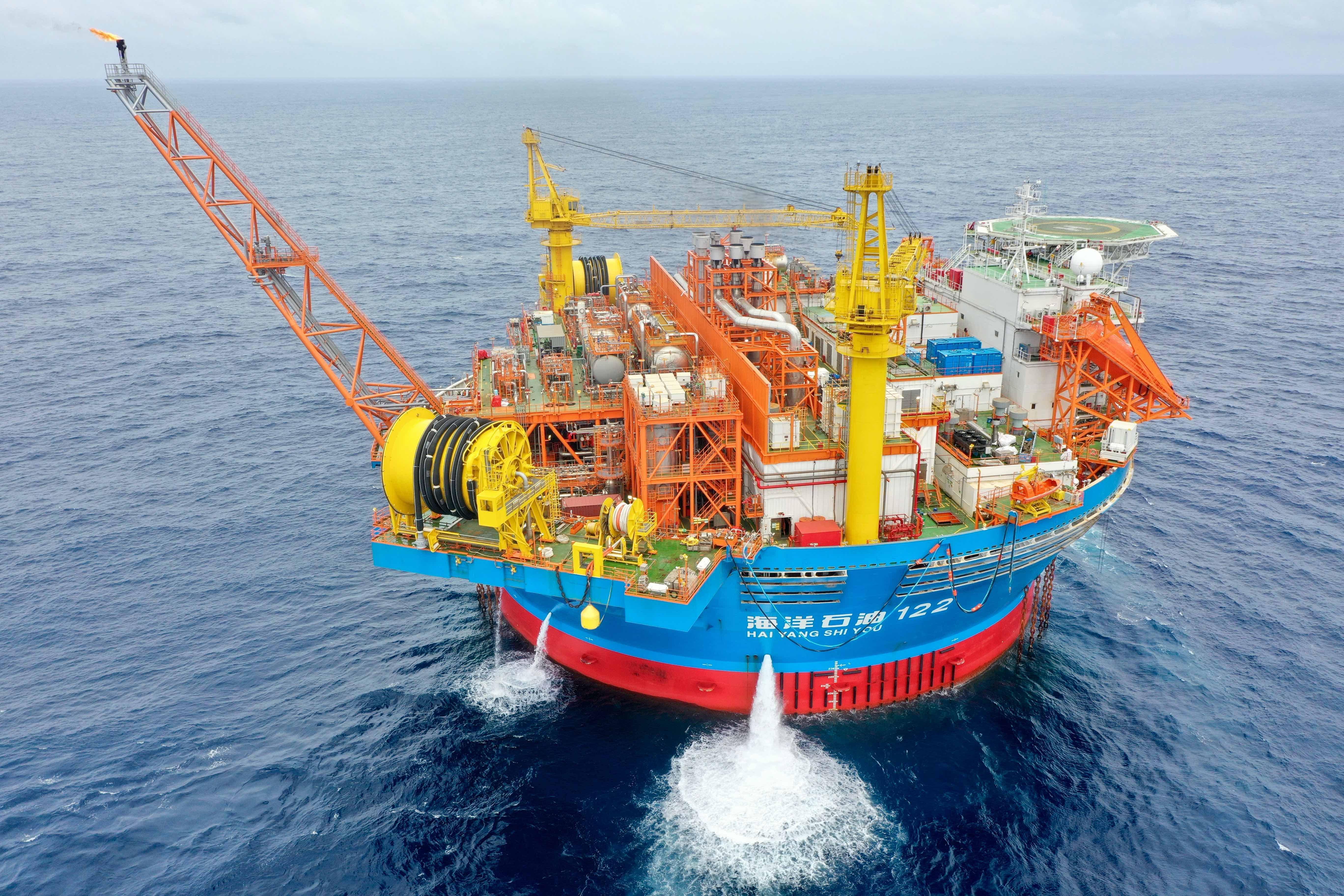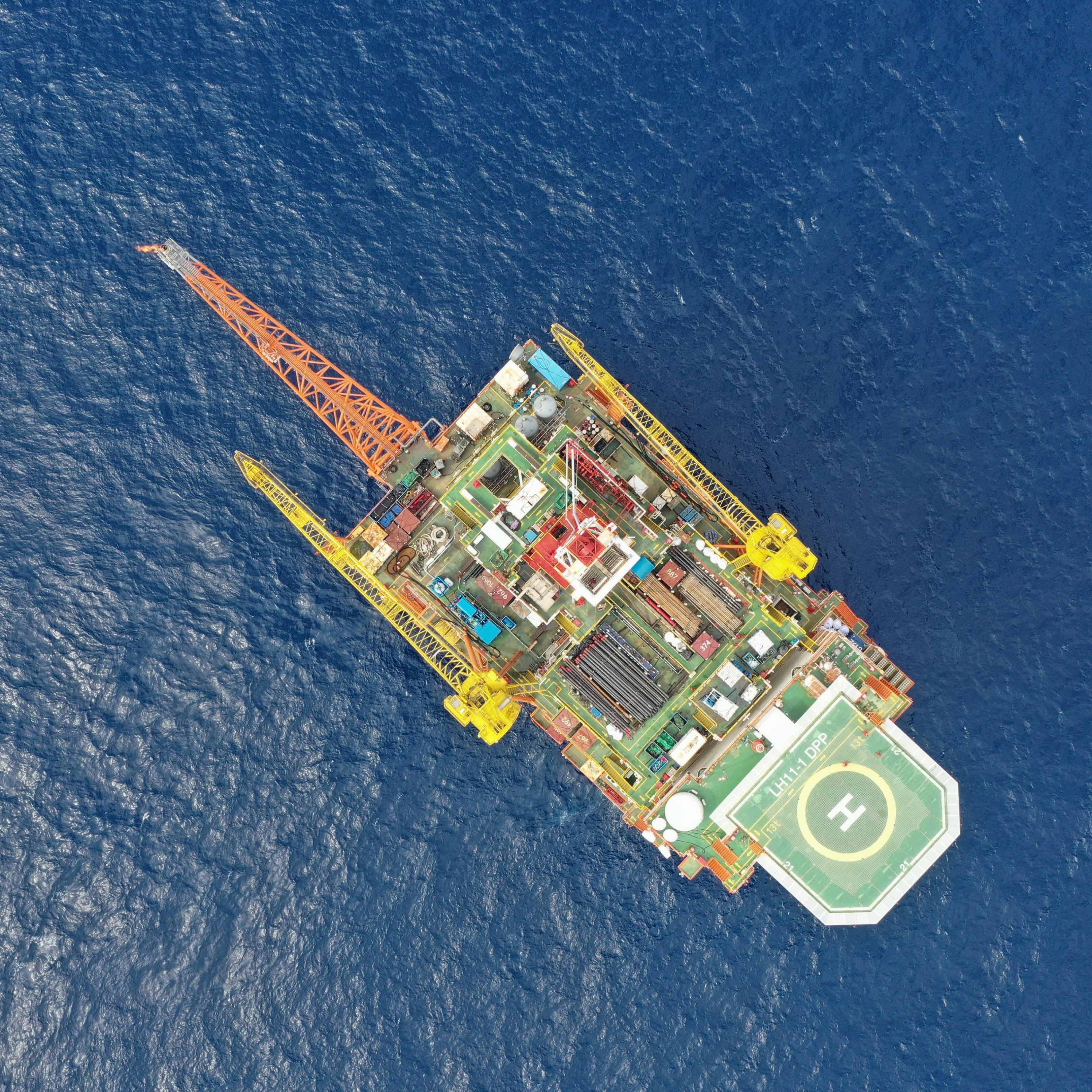
On September 19th, China National Offshore Oil Corporation (CNOOC) announced that the China's first deepwater oilfield secondary development project—the Liuhua 11-1/4-1 Oilfield Secondary Development Project in the Pearl River Mouth Basin—has commenced production. This milestone signifies China's breakthrough in the economic and efficient development of deepwater oilfields, enhancing the nation's global leadership in the design, construction, and installation of deepwater oil and gas equipment. It also provides robust support for ensuring national energy security and developing new quality productive forces in the marine energy sector.


At 9:28 AM on the day of the launch, an underwater robot activated a subsea production tree over 300 meters deep, connected to Asia's tallest deepwater jacket platform, "Haiji-2". The crude oil, processed through the production system and pre-treated on "Haiji-2," was then transported to Asia's first cylindrical floating production, storage and offloading (FPSO) facility,"Haikui-1", located 2.5 kilometers away. The ignition of the flare signaled the official start of the project.

The Liuhua 11-1 Oilfield, which has been in operation since 1996, now enters its 28th year. The redevelopment includes both the Liuhua 11-1 and Liuhua 4-1 oilfields, at an average water depth of around 305 meters. The project plans to develop 32 wells, with an expected peak daily production of 2,700 tons of crude oil, extending the oilfield's life by an additional 30 years.

Technology-wise, the project has pioneered an innovative "Deepwater Jacket Platform + Cylindrical FPSO" development mode, significantly reducing the high costs and technical difficulties traditionally associated with deepwater oilfields, and greatly improving efficiency. Both "Haiji-2" and "Haikui-1" are equipped with world-class technology, highlighting China's advancements in deepwater oil and gas exploration.
The implementation of this project not only marks progress in China's deepwater oilfield development technologies but also offers a "Chinese solution" for the efficient development of similar deepwater oilfields worldwide.
Source: Lingnan on the Cloud
我国首个深水油田二次开发项目投产
9月19日,中国海洋石油集团(中国海油)宣布,我国首个深水油田二次开发项目——流花11-1/4-1油田二次开发项目在珠江口盆地正式投产,标志着我国成功开创了深水油田经济高效开发的新模式。这一项目不仅提升了我国在深水油气装备设计、建造和安装方面的世界领先水平,也为保障国家能源安全和加快海洋能源新质生产力提供了强有力支撑。
投产当天上午9时28分,水下机器人在亚洲最高的深水导管架平台“海基二号”上开启了300多米深的水下采油树。原油通过生产处理系统,经过“海基二号”预处理后,输送至2.5公里外的浮式生产储卸油装置“海葵一号”,点燃的火炬标志着项目正式启动。
流花11-1油田自1996年投产以来,已有28年历史。此次二次开发不仅包括流花11-1油田,还涉及流花4-1油田,水深约305米。项目共计划开发32口油井,预计高峰日产原油2700吨,延长油田开采寿命30年。
技术方面,项目创新性采用了“深水导管架平台+圆筒型FPSO”的开发模式,降低了传统深水油田开发的高成本与技术难度,极大提高了效率。装备“海基二号”和“海葵一号”具备世界先进水平,彰显了我国在深水油气开发领域的技术进步。
项目的成功实施不仅推动了我国深水油田开发技术的进步,还为全球类似深水油气田的高效开发提供了“中国方案”。
文、图|记者 王磊 通讯员 吴昊
译|赵凡
英文审校 | 麦芯羽
-
Video | Oscar Winner's Insight on Western Misconceptions of China
2024-09-20 20:34:11 -
Video | Foreign Guests Visit the Confucius Temple in Beijing
2024-09-20 20:34:11 -
ThePoint丨The US will do everything it can to smear China 美国撒币16亿美元抹黑中国
2024-09-20 16:51:46 -
Video | International Cultural Figures Focus on Chinese Pop Culture
2024-09-20 16:51:47






